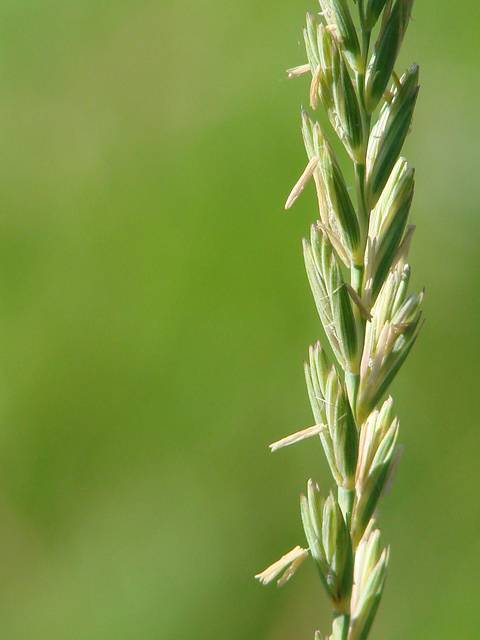Elymus multisetus
Elymus repens
big squirreltail
creeping wild rye
Sheaths open, auricles well-developed;
ligules under 0.5 mm. long;
blades flat, usually hairy, 5-10 mm. broad.
Inflorescence a stiff, erect spike 7-15 mm. long, the rachis not disarticulating;
spikelets 5- to 6-flowered, 1 per node, crowded, about twice as long as the internodes;
glumes lanceolate, awn-tipped, 5- to 7-nerved, 6-7 mm. long;
lemmas slightly longer than the glumes, acute, awnless or with a straight awn up to 10 mm. long;
paleas equaling the lemmas.
Utricle
Elymus multisetus
Elymus repens
Occurring east of the Cascades crest in Washington; central Washington to California, east to Idaho, Colorado, and Arizona.
Occurring on both sides of the Cascades crest in Washington; Alaska to California, east across North America to the Atlantic Coast; circumboreal.
- Local floras:
CA,
OR,
WA
- Local Web sites:
CalFlora,
CalPhotos,
Flora NW,
PNW Herbaria
WildflowerSearch
iNaturalist (observations)
USDA Plants Database
- LBJ Wildflower Center
- SEINet
- Plants of the World Online
- Encyclopedia of Life
- Wikipedia
- Google Image Search
- Local floras:
BC,
CA,
OR,
WA
- Local Web sites:
CalFlora,
CalPhotos,
Flora NW,
PNW Herbaria
WildflowerSearch
iNaturalist (observations)
USDA Plants Database
- LBJ Wildflower Center
- SEINet
- Plants of the World Online
- Encyclopedia of Life
- Wikipedia
- Google Image Search



